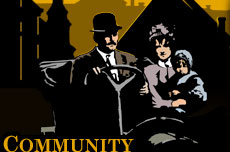The Copper Country was an incredible mix of people from dozens of nations. A simple walk down the streets of Calumet, Hancock or South Range transported a person to any number of countries in Europe. Social halls and churches represented the most numerous ethnic groups: Croatians, Cornishmen, Finns, Germans, Irishmen, Italians, Poles, and Slovenes to name just a few. Boarding houses operated by wives of mineworkers contained dense concentrations of men from the same country, often from the same towns or regions. It is no surprise, then, that one of the WFM’s most important tasks in organizing Copper Country workers was to communicate with workers who spoke different languages. To overcome this barrier, the WFM employed organizers from backgrounds that matched the Copper Country’s rich mix of ethnicities. |


